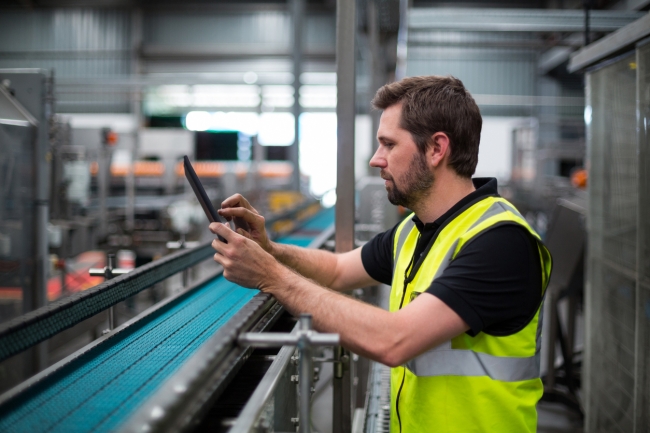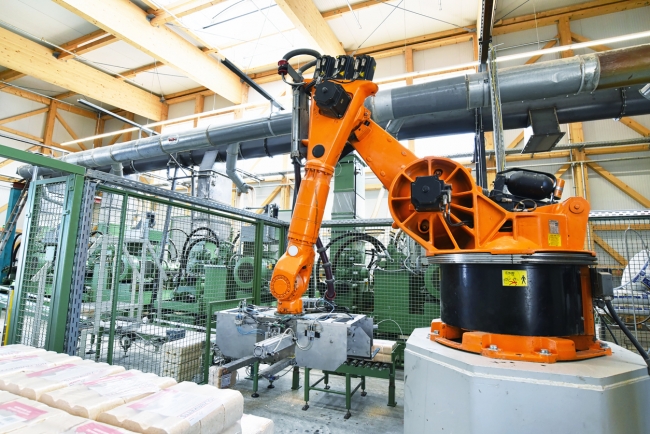4 minute read • published in partnership with Epicor
Opinion: Achieving the smart factory ideal
As the world continues to shrink, businesses are finding themselves having to compete with new market entrants that are increasingly turning the heads of their customers. To remain competitive in a progressively digital world, they are having to become fully connected enterprises that bring together people, processes and technology. Terri Hiskey from Epicor explores why the manufacturing sector is no different and why in many ways it is aiming to go even further.
Savvy manufacturers are increasingly looking to move towards a smart factory ideal that is based upon technologies such as artificial intelligence (AI), robotics, analytics and the Internet of Things (IoT). It’s about joining the dots to provide a pathway to success. Providing the factory with embedded intelligence can allow it to self-regulate and maximise efficiencies from the shop floor to the board room, adjusting its course and taking optimal actions ‘on the fly’ without requiring any human intervention.

Not just a connectivity focus – 4IR is about tapping into automation for data collection, IoT and workflows, to streamline processes that were labour-intensive in the past / Picture: Getty/iStock
A fear of the unknown
It’s fair to say that, until now, the move towards smart factories has been slow to take off within the industry. The reasons for this are numerous. Mainly though, it is due to a lack of the requisite in-house expertise, an inherent reticence to move processes into the cloud and the complexity of overhauling costly legacy systems. After all, why would a business want to rip and replace something that has taken years—and many millions—to acquire? Another key reason is the fear of the unknown and unanswered questions. How will it impact my operations? What effect will it have on staff? What change management processes do I need to put in place? How can I measure value and success?
But it seems the manufacturing industry is set to take a big leap of faith, with analyst group IDC forecasting that it is going to be one of the biggest spenders on IoT over the coming years. Once thought of as the domain of connected cars and the internet fridge, the IoT is—as we have seen—a key component of the smart factory. In fact, IDC predicts that discrete manufacturing will be the top spender on IoT this year with $119 billion, and process manufacturing will spend $78 billion.
Streamlining processes
With spending on the smart factory seemingly on the rise, it appears that the marriage of cyber and physical systems will finally become a reality. However, for a manufacturer to become truly connected and reap the benefits—such as better collaboration, control, empowerment and growth—it needs to go far beyond just buying the right technology. From IoT to AI, the numerous processes both within and outside the walls of a company need to be streamlined to ensure success. Otherwise, they are tantamount to a collection of curiosities that simply sit on the shelf.
Enterprise resource planning (ERP) is very much the glue that holds the smart factory together, allowing it to extract real-time data for immediate analysis and informed decision making. Latch and hinge manufacturer Southco is one such company to have enjoyed the benefits. ERP quickly revealed the true level of plant utilization on its shop floor following a recent implementation. Southco found that its overall equipment efficiency (OEE) levels were running at a mere 52%, a far cry from its target rate. Armed with this insight, the company was able to raise this figure to 85% and even retire five old moulding machines without having to replace them, due to the improved efficiencies; contributing to a net gain of $700,000 to date.

The smart factory ideal is based upon technologies that provide a factory with embedded intelligence to allow it to self-regulate and maximise efficiencies / Picture: Getty/iStock
Being faster and smarter
If not approached in the right way, the fourth industrial revolution could become a wasteland of expensive technology that becomes meaningless because it wasn’t integrated efficiently—realising the fears which have hindered some manufacturers’ adoption to date. It’s not just about connectivity. It’s about what you do with those connections to make your business run faster and smarter. It’s about tapping into automation for data collection, IoT and workflows, to streamline processes that were labour-intensive in the past.
Aware that time equals money, Boers & Co FineMetalworking Group saw time compression across all of its processes was critical to ensure it could meet the complex and morphing demands of its customers. It used ERP to roll-out a wide range of Quick Response Manufacturing (QRM) techniques to ensure the fast movement of jobs, projects, processes and information across the business to reduce customer lead-times. This provided end-to-end intelligence throughout the factory, improving efficiencies and collaboration.
Thriving in a global marketplace
Manufacturers large and small are needing to bring their people, processes and technology together to not just survive, but thrive in a global marketplace. They have learnt from businesses that have fallen by the wayside, that dipping their toes into using relatively new technologies is not enough to truly connect a business. However, taking the giant leap to a smart factory is scary for many. Therefore, manufacturers need to ensure they get a timely return from any investment they make. ERP is the tool which will enable them to get the most out of their investments in new technologies. That way they can continue on their path towards a smart factory utopia.

